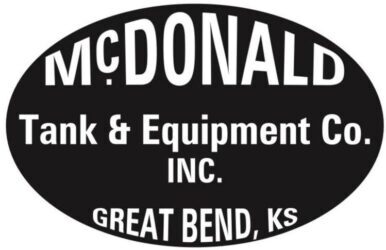Contaminated fuel or crude oil tanks can spell disaster for any industry that relies on these vital resources. Bacterial contamination in these tanks can lead to equipment damage, increased maintenance costs, and compromised product quality. To ensure the integrity of your fuel or crude oil storage, it’s crucial to take proactive measures to prevent the formation of bacteria. This article outlines a comprehensive approach to fuel tank maintenance that includes fuel monitoring, storage maintenance, cleaning, and the use of EAP-approved diesel fuel biocides.
Fuel Monitoring: A Key Preventative Measure
Regular monitoring of your fuel is the first line of defense against bacterial contamination. Periodic sampling and testing of the fuel inside your storage tank can provide invaluable insights into its condition. This process helps you identify any early signs of contamination, allowing for timely intervention and preventing more extensive issues.
Fuel analysis involves checking for the presence of bacteria, water, and other contaminants. Special attention should be paid to the water content, as excess moisture can create an ideal environment for bacteria to thrive. When excessive water is detected, it should be promptly removed to prevent bacterial growth.
Fuel Storage Maintenance: Minimizing Water Exposure
To minimize the risk of bacterial contamination, fuel tank insulation and routine discharge of water are essential. Insulating the tank helps maintain stable temperatures within, reducing the likelihood of condensation forming on the interior surfaces. Condensation can introduce moisture into the fuel, providing a breeding ground for bacteria.
Regularly discharging water from the bottom of the tank is another critical practice. Water tends to settle at the tank’s lowest point, making it a prime location for bacteria to proliferate. Implementing a routine schedule for draining this water ensures that the bacterial habitat is disrupted, reducing the risk of contamination.
Cleaning: Sludge Removal and Scheduled Cleanings
Over time, fuel tanks accumulate sludge, sediment, and other debris that can promote bacterial growth. Regularly removing this buildup is crucial to maintaining the tank’s cleanliness and integrity. Here are some key aspects of tank cleaning:
- Sludge Removal: Sludge, comprised of organic matter and contaminants, is a breeding ground for bacteria. Removing it from the tank bottom prevents the proliferation of harmful microorganisms.
- Scheduled Cleanings: In addition to sludge removal, it’s advisable to schedule periodic tank cleanings. These comprehensive cleanings should be performed by trained professionals and involve the removal of any residue and contaminants. The frequency of cleanings may vary depending on the tank’s usage and environmental conditions.
Fuel Treatment: Using EAP-Approved Diesel Fuel Biocides
Incorporating fuel treatments into your maintenance routine is another crucial step in preventing bacterial contamination. EAP-approved diesel fuel biocides are specialized chemicals designed to inhibit the growth of bacteria and other microorganisms in fuel and crude oil tanks. Here’s how they work:
- Bacterial Control: Diesel fuel biocides disrupt the cellular processes of bacteria, preventing them from reproducing and causing damage. This inhibits the formation of bacterial colonies in the tank.
- Compatibility: It’s essential to use biocides that are approved by the Environmental Protection Agency (EPA) to ensure safety and compliance. These biocides have been rigorously tested for efficacy and environmental impact.
- Application: Diesel fuel biocides should be added to the tank at the recommended dosage during routine maintenance. Proper mixing and distribution ensure that the biocide effectively treats the entire fuel volume.
Preventing bacterial contamination in fuel and crude oil tanks is paramount for maintaining the reliability and efficiency of operations in industries that rely on these resources. The proactive maintenance practices outlined in this article offer a comprehensive approach to safeguarding your storage tanks:
- Fuel Monitoring: Regular sampling and testing help identify early signs of contamination and excessive moisture.
- Fuel Storage Maintenance: Proper insulation and routine water discharge minimize the risk of condensation and bacterial growth.
- Cleaning: Sludge removal and scheduled cleanings prevent the buildup of contaminants and maintain tank cleanliness.
- Fuel Treatment: Using EAP-approved diesel fuel biocides inhibits bacterial growth, ensuring the fuel remains free from contamination.
By implementing these practices, you can significantly reduce the risk of bacterial contamination, protect your equipment, and maintain the quality of your stored fuel or crude oil. A proactive approach to tank maintenance is an investment in the longevity and reliability of your operations.
